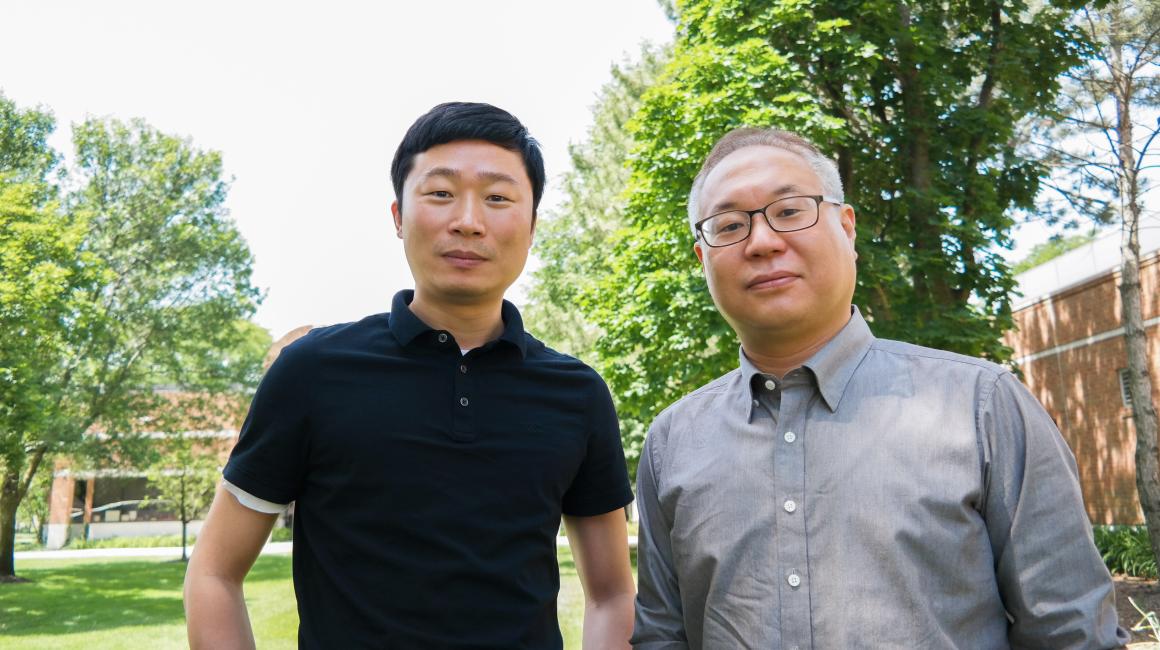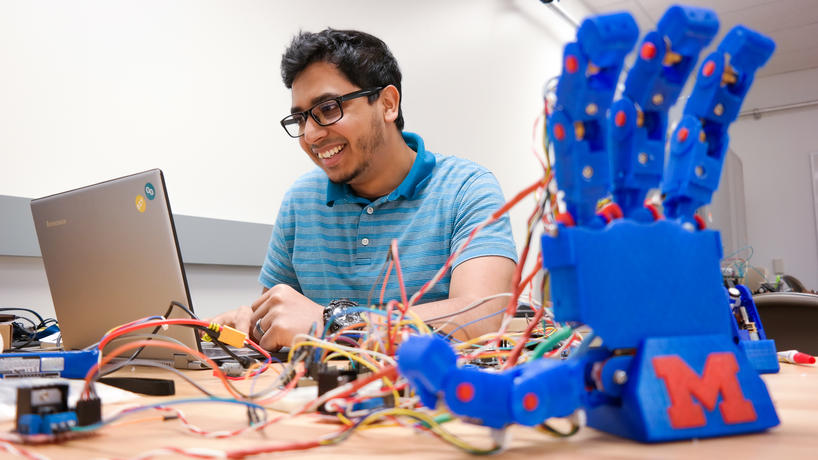
Industrial and Manufacturing Systems Engineering Professor Sang-Hwan Kim won’t be surprised if UM-Dearborn soon becomes an epicenter for human-centered design—an emerging field focused on the intersections of technology and human experience.
The fact that his department is so stacked with faculty specializing in ergonomics and human factors (a more psychological cousin of ergonomics) is a great start. And come fall, the launch of a new Master of Science degree program in Human-Centered Design and Engineering will make the university one of the few places in the country—and the only in the region—to offer a degree that Kim says is in demand.
“The automotive companies, in particular, are hiring tons of people in this field as they focus on developing user experiences in their cars,” Kim said. “But here in southeast Michigan, there is no institute or university where students can get in-depth training in user interfaces or user experiences. Right now, companies are having to look well outside the region to fill those positions, so we think we can help open a new local talent pipeline.”
Kim’s colleague, Assistant Professor Feng Zhou, explained that the demand is reflective of a continuing evolution in our relationships to technology, which is becoming less about functions and more about experiences.
“Cars, for example, used to just be about moving from point A to point B, and so most of the engineering was focused on that kind of performance. But as we move to cars that do more of the driving for us, the design will be more about how cars can make you happy while you’re moving from point A to B.”
Human-centered design is all about how those new systems can be designed to be more efficient, effective and enjoyable—whether they’re in your car, phone or any other piece of technology. And that, Zhou said, can call on deep training in a variety of different fields.
Students in the new 31 credit-hour program can expect cross-college coursework in engineering, art and design, marketing, and even human psychology. And as far as engineering degrees go, it’s also a pretty non-technical one (as in, no advanced math skills required); so Zhou and Kim are hopeful the program will attract students from all kinds of undergraduate backgrounds.

The new Master of Science in Engineering degree program in Robotics Engineering also is rooted in a burgeoning demand, and Electrical and Computer Engineering Professor Yu Zheng said a lot of that energy is coming from students themselves.
“We started our undergraduate program in robotics in 2014; so now, we are starting to see graduates from that program who want to continue their studies. Plus, we often receive questions from students about whether we have a robotics master’s program or had plans to start one,” Zheng said.
The 30 credit-hour program gives students the chance to dig into several emerging robotics disciplines, including autonomous vehicles, drones and other flying robots, and the component systems that make them all work.
Zheng himself is excited to help launch a new research initiative into humanoid robots that are designed to function as human assistants. (The ones arriving on campus in the fall will even have faces and five-fingered hands.) That’s brand new technology for UM-Dearborn that will push students into one of the more complex and buzzworthy robotic platforms around today.
In fact, the fact that UM-Dearborn faculty are working on so many bleeding-edge projects in so many robotics disciplines was another big motivation for the new master’s program.
“One of the main challenges we’re facing now is finding students to work in our labs on all these projects,” Zheng said. “So we’re hoping the program attracts students with strong backgrounds in robotics—and those who want to continue building those skills.”
No doubt, the opportunities for cool research won’t be in short supply. Nor will the job opportunities, according to Zheng. As it is with human-centered design, demand for robotics expertise is growing across a broad range of industries, including many here in southeast Michigan.


